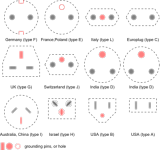Eritrea Visitor Information
Parent page
On this page
The country can be divided into three major climatic zones; the central highlands, the coastal region and the western lowlands.
In the highlands, May is the hottest months with temperatures reaching a high of 85°F. The coolest months are from December to February with lows of around 32°F with great variations between each days high and low temperatures. There are two raining seasons, March and April experiencing what is known as the short rains and the main rainy season from late June to the beginning of September.
Along the Red Sea Coast there lies a hot, dry desert strip the hottest months being June through to August when temperatures can reach 105°F. Rain is rare on the southern coast but the northern coast has a rainy season from December to February.
The western lowlands experience temperatures of up to 105°F during the hottest months of April to June. December is the coolest months when temperatures will fall to 55°F. Daily highs and lows range up to 38°F
Visas are required by all to enter Eritrea and your passport must be valid for at least six months beyond your departure date
It is best to check with your local Eritrean Embassy or Consulate for the latest visa requirements.
Listing of EritreanTourist offices and/or embassies located around the world
Official Currency: Nakfa
Current Exchange Rate: Today's Exchange Rate
The government of Eritrea introduced the country's new currency, the Nakfa, in November 1997. Credit cards are not widely accepted. As of January 1998, only the airlines and one hotel accept them. Generally, foreigners must pay bills at major hotels in U.S. dollars or U.S. dollar-denomination travelers checks.
Air
Eritrean Airlines currently offers a domestic passenger route between Asmara and Assab
Bus
Long distance bus services are available from Asmara to Teseney, Adit Quala and Senafe with stop overs the main towns on route. The smaller towns and villages are harder to get to and hitching may be your only option.
Road
Driving is on the right hand side and an International Driving Licence is required. Since the war, reconstruction of the road networks has become one of the governments main objectives. Most of the business centres and tourist areas are connected by reasonable roads, but four wheel drive vehicles are recommended on smaller, lesser used roads and tracks.
Car hire is available through some local tour operators based in Asmara
1st January - New Years Day
24th May - Independence Day
20th June - Martyrs Day
1st September - Anniversary of start of armed struggle
December 25th - Christmas Day
Moveable Easter and Muslim religious holidays
Electric Power is 220V - 240V running at 50Hz.
The Plug type used in Eritrea is: "Type C, E & F"


